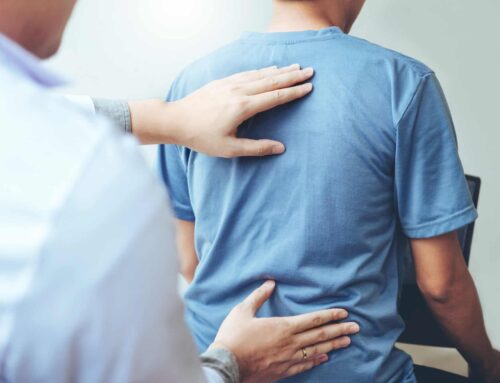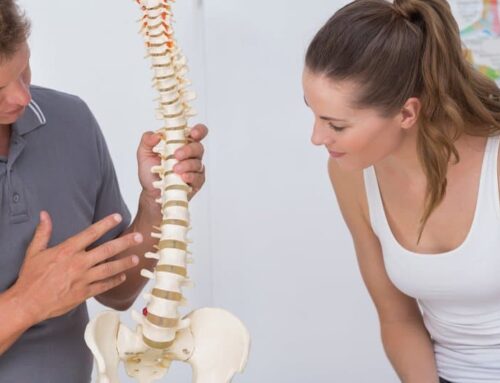Lower back pain is one of the most common medical conditions and a major cause of disability across the world – affecting performance at work and general well-being. Are you suffering from spinal injuries? Lower back pain relief is within your grasp with these advanced spinal and muscle treatments.
It’s estimated that 80% of Americans will experience lower back pain at some point—and for most, lower back pain can be ongoing and debilitating.
Lower back pain can be categorized as acute, subacute, or chronic. Acute episodes of lower back pain usually last from a few days to four weeks and subacute lower back pain lasts between four and twelve weeks.
According to the National Institutes of Health, about 20% of people with acute back pain go on to develop chronic back pain—defined as pain that lasts 12 weeks or longer. Even in these cases, there are many different treatment options to help relieve lower back pain symptoms.
Advances in the field of interventional pain medicine have led to new hope for those seeking lower back pain relief. Some of these therapies have been used successfully for many years while others represent completely new approaches to treating this common condition. With growing emphasis on quality care, clinical outcomes, and cost-effectiveness, alternate treatments are receiving increased attention.

Until now, the most common treatment options for chronic lower back pain were measures such as physical therapy, steroid injections, or in the most severe cases, spinal fusion or total disc replacement surgery. The overuse and abuse of opioids have also led to a wider acknowledgment of the benefits of new and innovative approaches to treating pain. Here’s a list of some treatments that may soon become mainstream options for patients with chronic or recurrent low back problems:
1) Spinal Decompression
Sometimes called “puncture” treatment, spinal decompression involves inserting needles directly into painful regions of the disc. Decompressing the disc relieves pressure on surrounding tissues and is thought to relieve symptoms.
This procedure is safe and requires sedation from a pain management specialist. The decompression may provide short-term relief. A Cochrane review concluded that while the evidence favors the use of needle decompression over placebo, there is insufficient information available regarding whether it provides better outcomes than nonsurgical interventions.
2) Epidural Steroid Injection

The use of epidural steroid injections (ESI) for the treatment of chronic pain is widespread. ESIs are used to treat a variety of conditions including sciatica, lumbar radiculopathy, and cervical myofascial pain syndrome. They have been shown to be highly effective in treating acute low back pain when compared with placebo or other treatments such as physical therapy alone.
Several retrospective studies found that ESI provided significant lower back pain relief in patients with failed back surgery syndrome and may provide long-term benefits by improving spinal cord blood flow and decreasing inflammation. Another cohort study showed that ESI reduced disability and increased work capacity in patients with failed back surgery syndrome, or FBSD.
3) Lumbar Spinal Stenosis
The lumbar spine is the most common site of symptomatic degenerative disease. It can be caused by a variety of conditions, including spondylolisthesis and osteoporotic vertebral collapse. Spinal canal narrowing causes symptoms such as back pain with or without leg pain. Other mechanisms include compression of nerve roots that innervate the lower extremities and impingement on nerves within the neural foramen.
Treatment options include epidural injections, percutaneous endoscopic discectomy, microdiscectomy, decompression surgery, and fusion. Diagnosing lumbar spinal stenosis involves taking a thorough patient history and performing physical examination tests. Radiographic studies often help confirm findings based on clinical presentation.
4) Spinal Stabilization Surgery
This technique uses screws and rods to stabilize the spine after the removal of damaged vertebrae. The goal of spinal stabilization is to restore stability by preventing further movement of the spine while allowing healing to occur. In addition to stabilizing the spine, spinal fixation can help correct deformities caused by injury or disease and provide lower back pain relief.
For example, when two adjacent vertebral bodies become misaligned due to degenerative changes, spinal fixation can hold those bones together until they fuse properly. If necessary, additional hardware can be added later to improve alignment.

In general, spinal stabilization has fewer side effects than fusion because it does not involve removing parts of the spine. However, it requires more extensive surgery and carries its own set of potential problems. Patients often experience significant discomfort during their first few weeks following surgery. Pain medication usually relieves symptoms within one to four days.
Afterward, patients typically feel soreness at the site where the hardware was inserted into the spine. Scarring associated with spinal stabilization can lead to nerve irritation and muscle weakness.
One additional fact to note is although spinal stabilization can effectively treat certain types of injuries, it cannot address conditions like herniated disks or bulging discs.
Conclusion
If you decide to pursue any of these methods for lower back pain relief, remember that recovery takes several months. During this period, you may find yourself dealing with lingering pain and stiffness. It’s important to keep up exercise routines so that you don’t lose strength and flexibility. Also, try to avoid lifting heavy objects—when possible, work out regularly using light weights instead.
Interventional Pain Management treatments that MidSouth Pain Treatment provides to our patients are less invasive and much easier to handle for patients than most of the treatments in this article. We invite you to visit us to learn more about how you can manage your lower back pain with a less invasive plan of care.
For information about other options available for treating chronic lower back pain, learn more by visiting the Midsouth Pain Treatment Center and check out our various pain management options.





